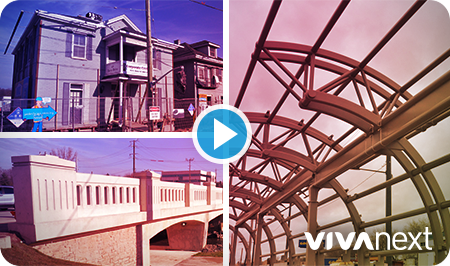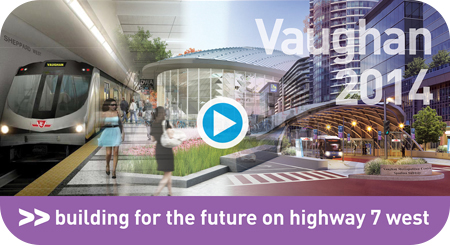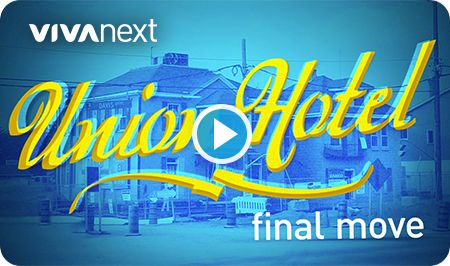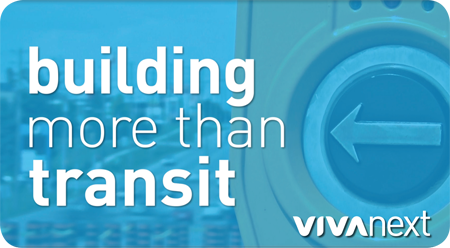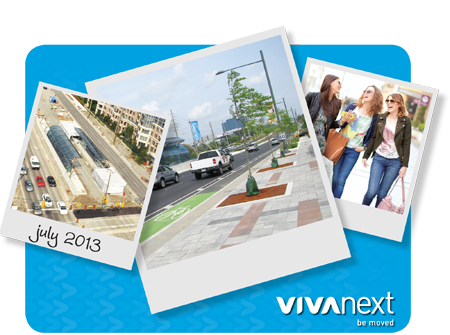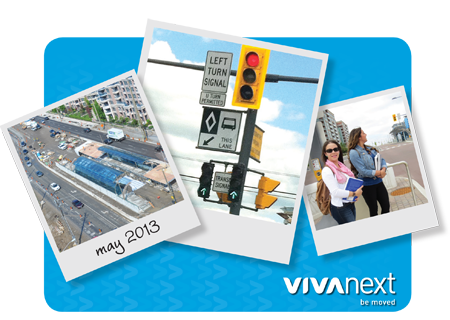It’s an exciting time as the transformation of Davis Drive has made significant progress and is starting to be seen along the corridor.
A lot of progress above ground was made this year and a number of milestones were achieved, all of which clears the way for 2015 and the last year of construction. We thank you for bearing with us through the mess and as we work hard to finish as quickly as possible.
Standing at Yonge and Davis, you can look down Davis Drive and see the installation of boulevards and planters. As you travel to your destination you’ll notice the decorative planters along with interlocking paving stones and concrete sidewalks in areas from Yonge Street to Longford/Parkside Drive.
Construction of the vivastation at Parkside/Longford and Davis is making great progress. The steel structure for the vivastation is in place and the glass for the canopies will be arriving soon.
Construction of two more vivastations at Main and Southlake Hospital are also underway.
The structure of the Keith Bridge has been rebuilt and the Tom Taylor Trail has been restored to its original location under Keith Bridge; which is located just past the GO train station.
VivaNext will be moving to the next phase of rapidway construction where station platforms, canopies and eventually rapid transit bus lanes will be built in the centre of the road. As a result, there will be permanent changes to how motorists use intersections, traffic lanes and access businesses along Davis. New traffic signals have been installed at Yonge, George and Barbara. Drivers can now make dedicated left-turns and U-turns where U-turn permitted signs are posted. From our experience on Highway 7, these new movements help the traffic flow smoother. For more information on these important changes please visit vivanext.com
We captured a number of these accomplishments on video and condensed them into a short clip for your viewing pleasure. The investment in modernizing our roads and revitalizing Newmarket’s infrastructure will go a long way to making sure Davis Drive is built on a solid foundation that will serve the growing needs of Newmarket for many decades to come. We look forward to the rapidway opening in 2015 and bringing Viva service to Davis Drive.

